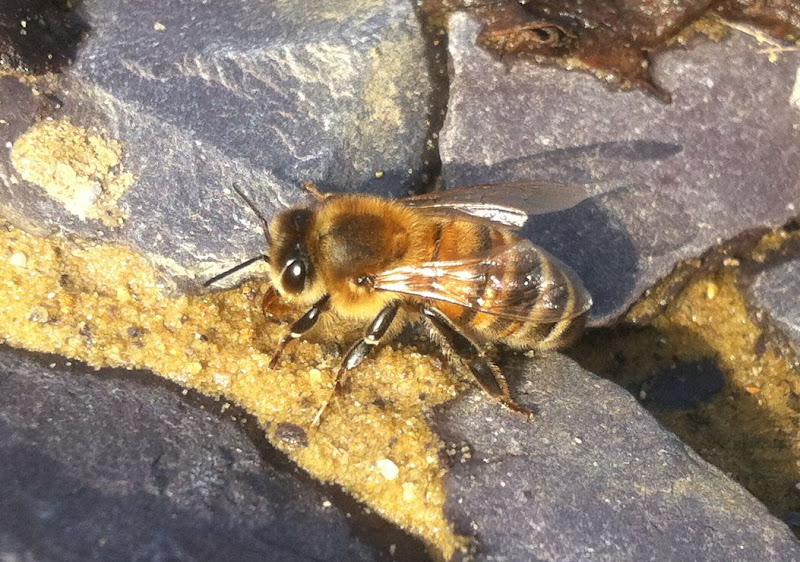AstralHighway
New Bee
I've been so fascinated by honeybee behaviour in my garden that I've looked for and now found this forum and this is my first post.
A few days ago, I noticed a number of honeybees making regular trips to a planter on our patio. Initially, I wasn't at all clear what they were doing, but now, it seems they are 'drinking' from the soil medium, which is peaty and often damp.
In sunny weather, there are anything between 4 and 10 bees using the planter. The planter has a layer of pebbles on the surface and between some of these, there is a gap that the bees can penetrate. Each bee spends up to a minute after landing, and then flies off virtually due south, all in the same direction.
The bees are obviously using some kind of visual marker as it takes some of them a few seconds to correctly align themselves with the target , using the surroundings of the planter.
Could they be drinking in this way? If so, is the water for them or for their larvae and how do they store it. Why don't they go to a more obvious source of water than this spongy but admittedly highly-absorbent planting material?
I did not notice a single honeybee in our garden until this discovery. The bees are not pollinating plants in our garden and do not even attempt to forage for pollen - they just arrive, do their thing in the planter and go.
We have other bee species, mostly leaf-cutter and bumble bees, that are pollinators.
I do not know where the nearest hive is. Until I saw these bees, I believed it to be as far as 3.5 miles away.
A few days ago, I noticed a number of honeybees making regular trips to a planter on our patio. Initially, I wasn't at all clear what they were doing, but now, it seems they are 'drinking' from the soil medium, which is peaty and often damp.
In sunny weather, there are anything between 4 and 10 bees using the planter. The planter has a layer of pebbles on the surface and between some of these, there is a gap that the bees can penetrate. Each bee spends up to a minute after landing, and then flies off virtually due south, all in the same direction.
The bees are obviously using some kind of visual marker as it takes some of them a few seconds to correctly align themselves with the target , using the surroundings of the planter.
Could they be drinking in this way? If so, is the water for them or for their larvae and how do they store it. Why don't they go to a more obvious source of water than this spongy but admittedly highly-absorbent planting material?
I did not notice a single honeybee in our garden until this discovery. The bees are not pollinating plants in our garden and do not even attempt to forage for pollen - they just arrive, do their thing in the planter and go.
We have other bee species, mostly leaf-cutter and bumble bees, that are pollinators.
I do not know where the nearest hive is. Until I saw these bees, I believed it to be as far as 3.5 miles away.

















































